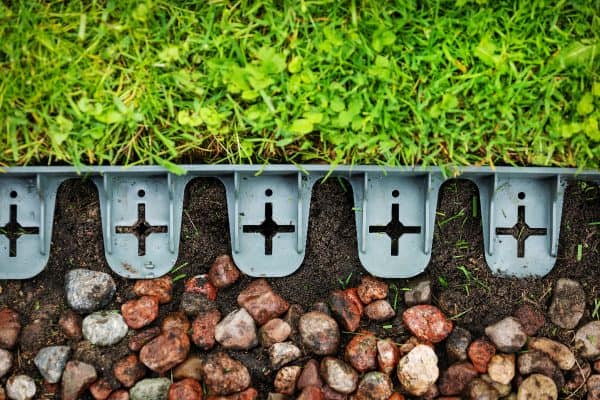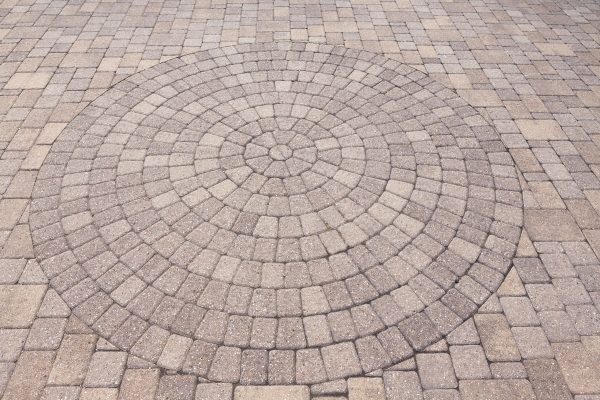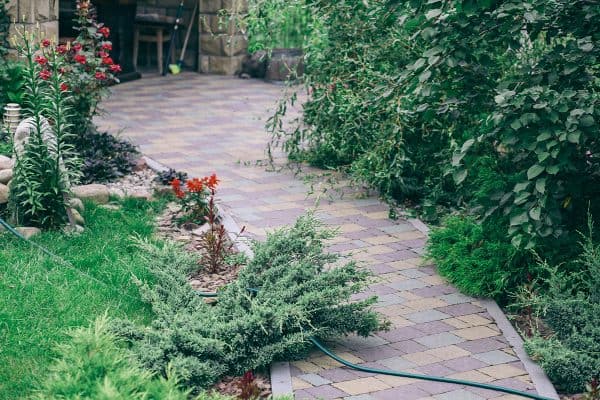Yard, garden, or landscape edgers feature aesthetic properties and serve functional purposes. Depending on your preference, there are several materials that can be utilized as borders installed in a variety of ways. We have researched relevant information that will help you decide what type, material, and design best suits your needs.
If the main reason you plan to install edgers is to prevent grass or weeds to spread into an adjoining area, regular edging is your best option. When you simply want to demarcate separate portions or sections without the presence of grass crossing over, no dig edging is a better choice.
The main difference between no dig and regular edging is that the former is simply laid on the ground surface while a portion of the latter is excavated and forms a barrier under the soil. This article includes the general application, purpose, advantages, and disadvantages of both edging designs.
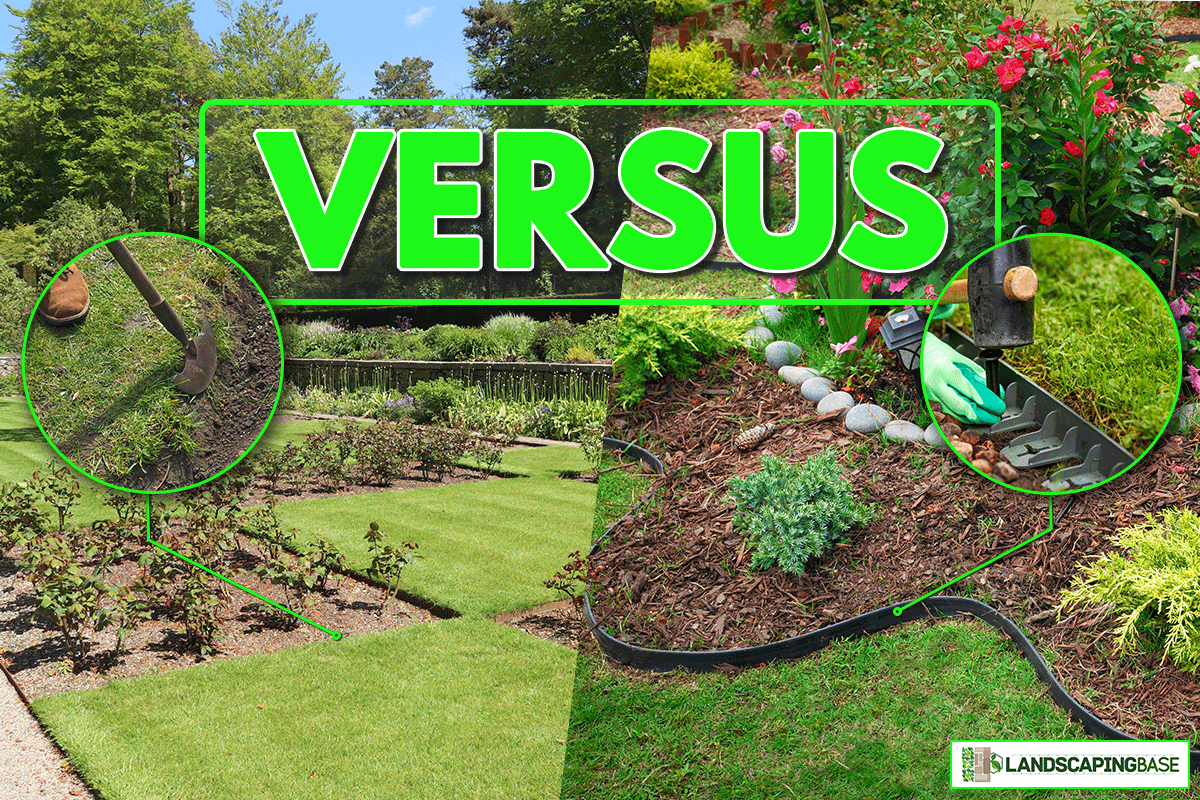
What Is Edging?
Edging is a form of barrier that you use to define borders, accentuate areas and decorate landscapes, flowerbeds, garden paths, and other outdoor structures. In terms of function, edging prevents soil and mulch from spilling into the yard when watered or rained on and acts as a root barrier to avoid grass from invading the bordered area.
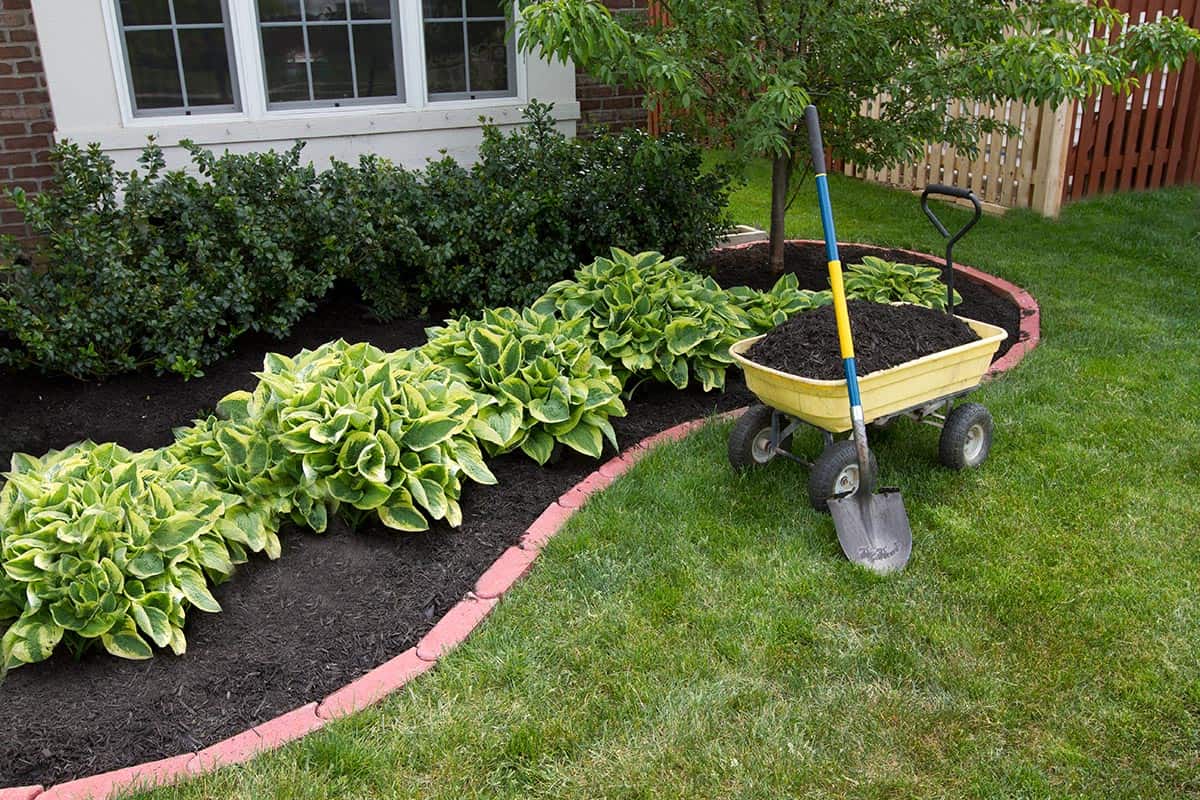
Put simply, they improve the look of your lawn and make it easier to maintain.
They fall under three categories: no dig, regular or in-ground, and a combination of both.
Regular Edging Or In Ground Garden Edging
Regular or in-ground edging entails digging or excavation to embed part of the material beneath the soil to prevent grass and weed propagation and invasion.
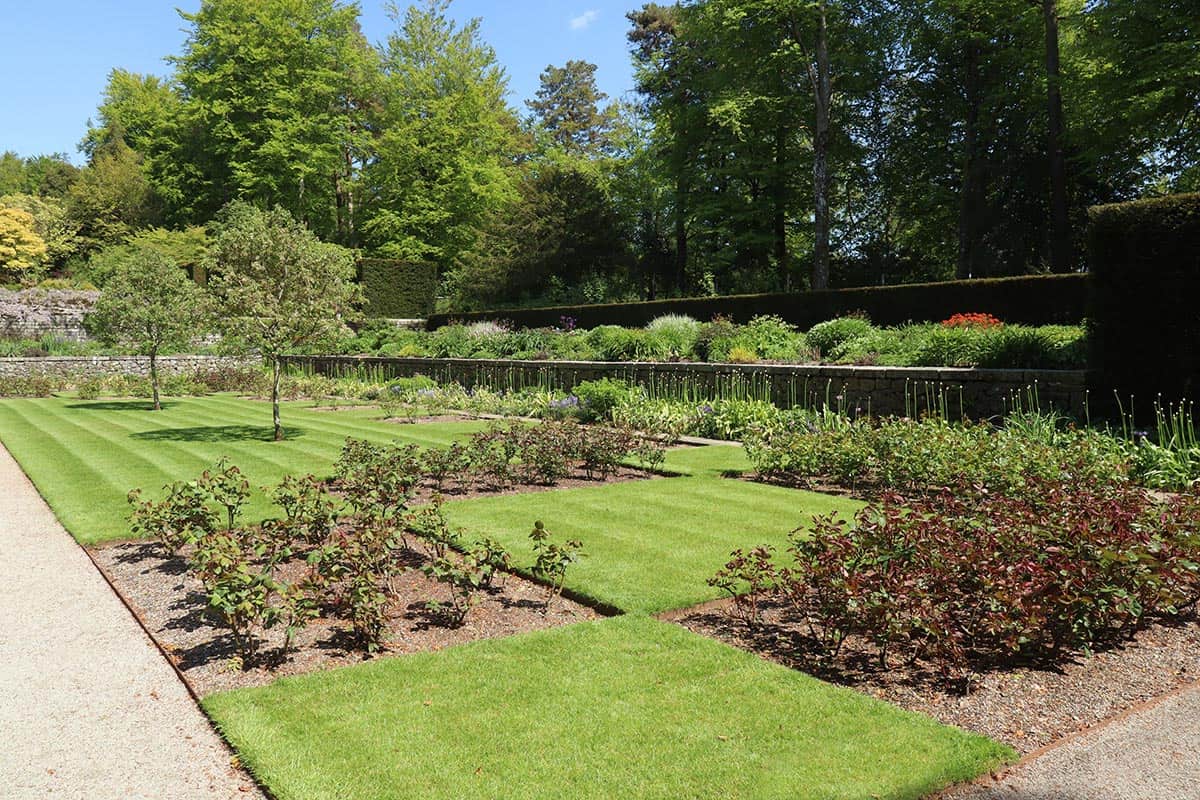
They are ideal for flowerbeds, landscaped gardens, pathways, and other outdoor areas next to a yard or lawn to prevent overlap and create a clean, well-defined border.
Materials To Use
Practically any available material can be used as edgers
- rocks,
- treated wood,
- metals,
- poured concrete,
- recycled products such as rubber and plastic,
- unused construction components like bricks, cinder blocks, and corrugated roofs,
- and prefabricated rolls of sheets like steel, aluminum, composites, and other fabrics.
Installation
Installing regular edging will require you to dig a trench with the use of either manual or handheld power tools. The depth and width of the trench would depend on the material you decide to use as an edger.
It is always important to make use of tools designed for edging because a regular shovel and a string-line trimmer will not have similar results.
Garden Edgers
Manual Edging
Manual edging is the use of non-powered tools. It is mostly utilized when digging trenches for small-scale landscaping such as flower beds, crop gardens, and other lawn designs.
A half-moon edger is the most basic edging tool. It consists of a semicircular blade located at the end of a long handle. You would generally have to push or pierce the equipment onto the soil or grass using your foot. It basically forms a straighter and cleaner cut than a shovel.
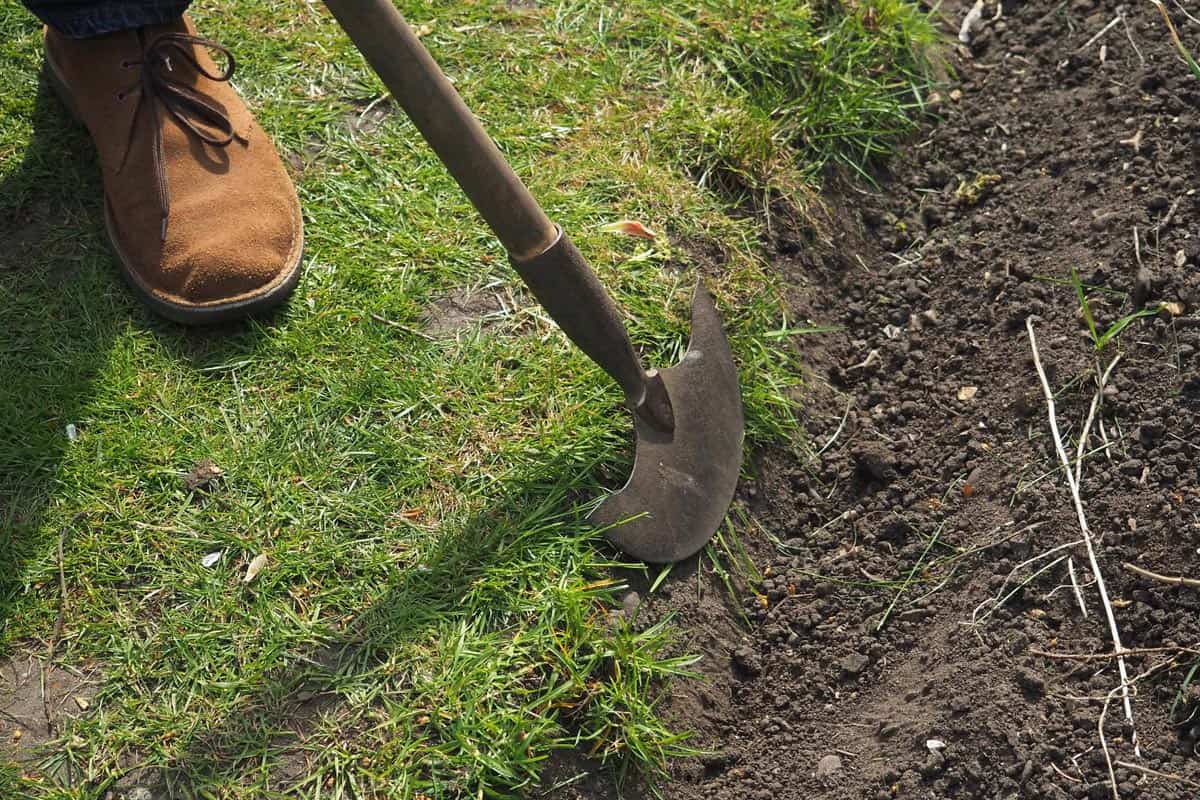
Check out Moon Edger with T-grip on Amazon.
A long-handle manual edger has a large flat blade similar to a shovel. You cut and edge the soil by piercing the material into the ground and then rocking it back and forth. Because of its sharp blade, weeds or grass overgrowth in your lawn can be removed or chopped.
Another tool you can use is a wheeled manual edger. As the name implies, it has a wheel and a cutting blade at the edge of a long handle. Using this instrument entails a lot of work since you will have to move it back and forth in order for the blade to turn.
Handheld Power Edgers
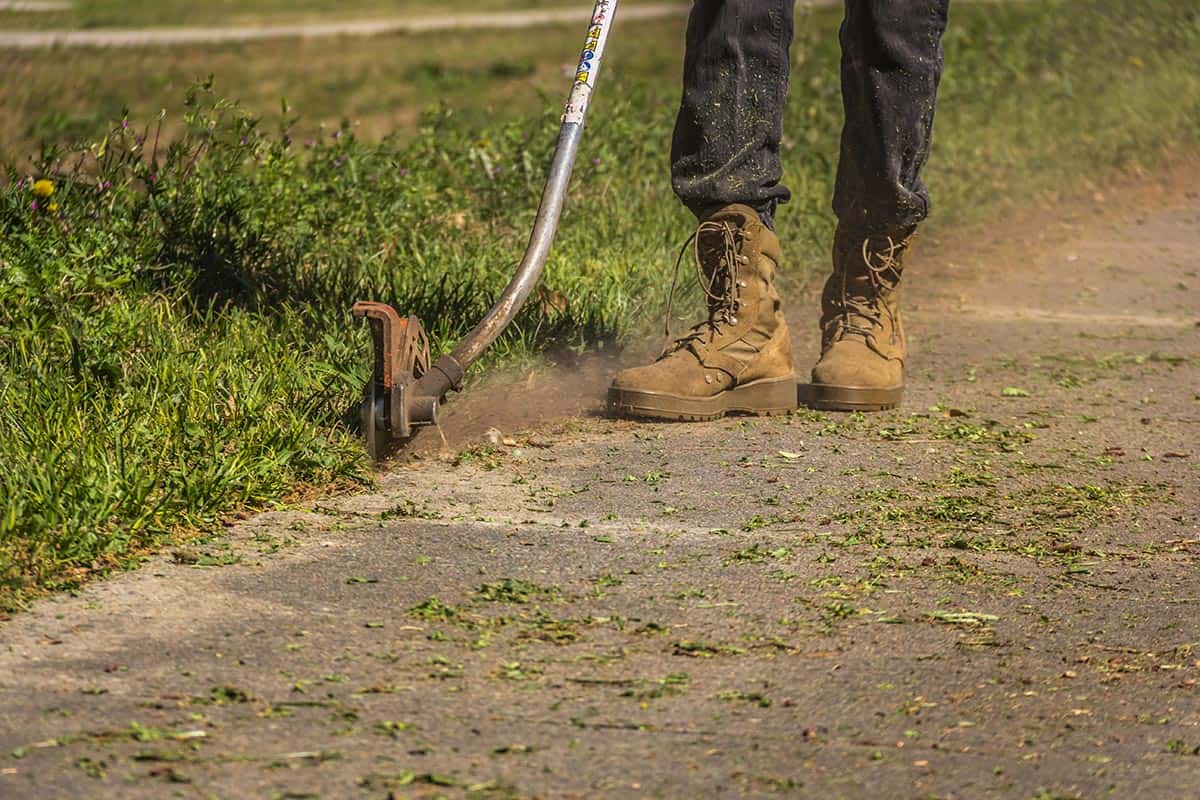
Handheld power edgers do the same work as manual tools with lesser effort on your part. It essentially lets you select the angle and depth of the cutting blade, making it relatively simpler for you to customize the trench you are digging.
The equipment itself is used on larger-scale landscape projects such as shaping borders or demarcations between gardens, lawns, and driveways.
Check out Handheld Edger on Amazon.
What Are The Pros and Cons Of Regular Edging?
Advantages
All types of garden edging create an attractive finish that enhances your yard. They effectively highlight areas and feature practical functions that keep landscape components in place.
Regular or in-ground edgers prevent grass and weed spread and invasion. The portion that is beneath the soil blocks the root system and inhibits growth. As a result, the rest of your landscape remains clear and easy to maintain.
They provide a sturdier structure that is not displaced by mowing, raking, and other maintenance procedures. Since they are partially embedded and anchored underground, extreme weather like heavy rain, floods, and strong winds hardly affect your edging.
Disadvantages
The main setback of regular or in-ground edging lies in the labor and cost it entails. Aside from the trench, you have to dig, the material that has to be placed, you have to refill the excavation, and make sure the edging is properly set.
Manually digging with a shovel or trowel will take time and considerable effort. You may need specialized equipment to properly install in-ground edging.
For relatively large projects, handheld or walk-behind power edgers will facilitate quicker installation. Purchasing one or hiring a contractor will add to the overall expense of the endeavor.
No Dig Edging

No dig edging simply means the material is laid on the ground surface and stacked according to your preferred design. They function mainly to provide aesthetic appeal and accentuate or highlight designated areas in the yard or garden.
Materials
Similar to in-ground edging, you can also use stones or rocks, bricks, pavers, treated wood, metals, poured concrete, and any other recycled materials. Apart from this, your options include pre-fabricated accessories made of metal, aluminum, plastic, and stainless steel.
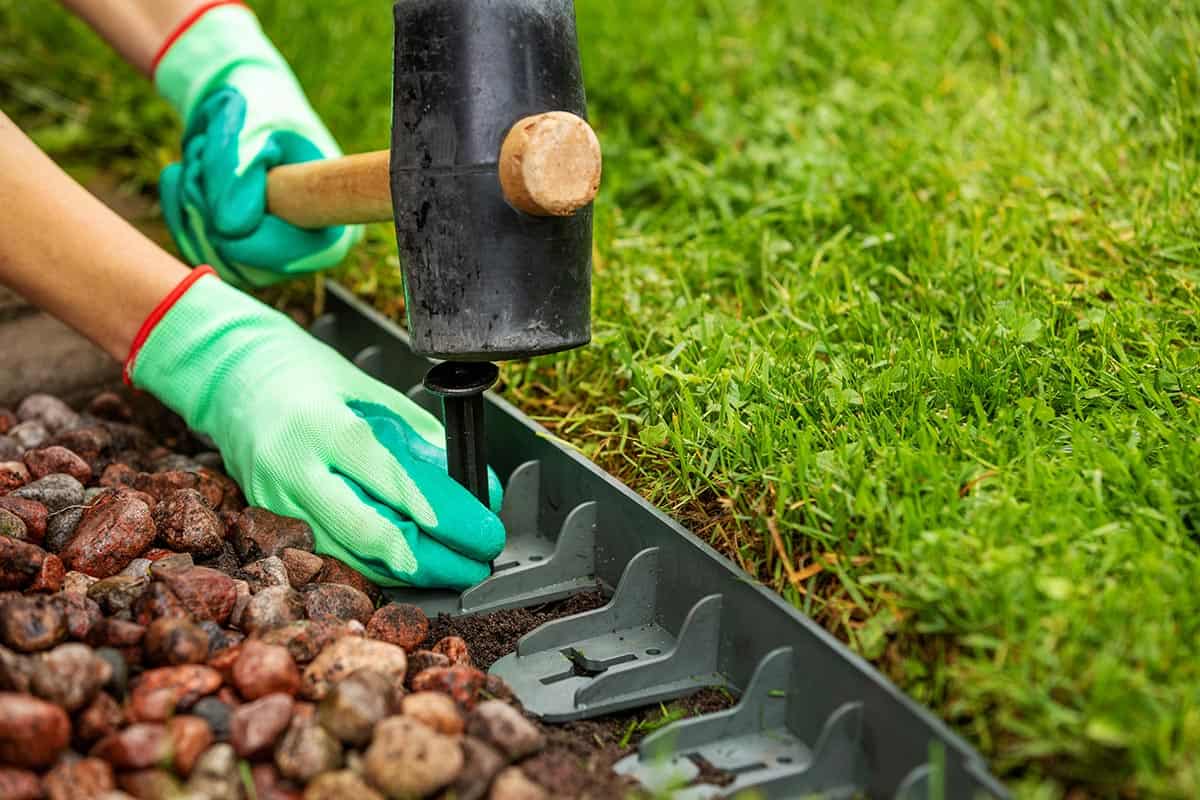
Check out Traditional No-Dig Landscape Edging on Amazon.
Installation
Installation is relatively easy - by simply placing your chosen material on top of the ground, no need for digging and using manual or powered edgers.
Pre-fabricated materials are incorporated or lined with slots wherein stakes or pegs are placed and fixed into the ground. These materials are flexible in that they can be put in a certain way that follows the contour of your landscape.
What Are The Pros and Cons Of No Dig Edging?
Advantages
No dig edging is easier to install since intense labor is not necessary. Unlike in-ground edging, you will not need to invest in tools and equipment when installing your preferred materials. Some shops offer a DIY kit on prefabricated accessories.
Apart from this, you can buy the materials - which generally have a wide range of variety and designs you can choose from - at a good value.
If you intend to use edging as a border between your lawn and garden to keep certain landscaping designs such as mulch or pebbles in place, no dig is the ideal option to choose.
Disadvantages
The materials used are not always durable since they can easily be moved and damaged during yard maintenance, especially when using a lawn mower. Apart from this, it cannot impede or block weed growth so you may easily spot grass growing in areas you do not want it to thrive.
Combined Edging
Combined edging is simply the combination of both edging techniques. The purpose of which is to block the growth of weeds while providing a borderline that has aesthetic appeal.
To illustrate, you have a garden that has pebbles placed on the ground as a landscape design on the other side of your yard. Installing in-ground edging will prevent lawn grass from sprouting and crossing over your garden beds.
Incorporating no dig edging will act as a barrier that would keep the pebbles in place.
To make installation easier, make use of a metal edging product that is designed with a sharp blade that can effortlessly slice into the ground. The material itself is proven to be quite durable so you do not have to worry about the product being damaged easily.
Check out Edge Right Landscape Edging on Amazon.
Is Landscape Edging Necessary?
Landscape edging is necessary because of its equally aesthetic and practical purposes. It generally functions as a border or demarcation line that creates a clean and organized garden design, beautifies your yard, and keeps landscape materials in place including mulch, pebbles, and soil.
In Closing
When it comes to landscaping, edging is an important factor that determines the overall quality of your yard or lawn. The specific type of which would depend on your landscaping and gardening needs and preference. We hope this article proved to be insightful and helpful in answering your queries.





